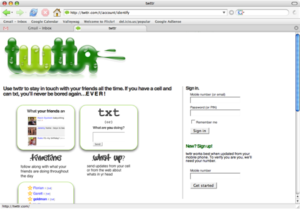Recent Posts
Tags

Fail Fast could work for you, but how?
Introduction:
Let me start with the most innovative thing I ever saw. It was cricket. 1992 Cricket World Cup. New Zealand playing on their home turf. In an era when fast bowlers would open the bowling, New Zealand’s cricket captain, Martin Crowe, opened the bowling with an off-spinner, Dipak Patel. It sounded crazy but it worked. The rules of that tournament were different. Field settings during the first 15 overs gave batsmen the edge to hit over the in-field. Crowe came up with a counter tactic. And it worked. Patel was often used as an opening bowler by Crowe during the later matches of the tournament. Being an avid cricket follower, this trend was nowhere to be seen for a long time after the 1992 World Cup. But what motivated Martin Crowe to go for this approach? The term may not be invented back then, but certainly, this was a fail-fast tactic. Had it not worked, the original thing would have stayed on course as followed by other teams. But if it did (which it did in this case) Crowe could use it to his own advantage.
Enough of cricket, let’s talk about fail-fast:
Fail-fast is a philosophical concept. It allows you the freedom to fail. But allows you to learn i.e. why did you fail. You review the ‘why’ factor. And improvise.
And the catch: it doesn’t have much of a price for you to pay.
Sounds easy. but does it work every time?
Don’t get your hopes high. Fail-fast can work but not every time. The reason: What did you learn?
So, what did you learn?
Every time there is a failure, there is introspection. It starts from scratch. You want to develop a product that helps you identify nearby pharmacies that provide discounts on prescriptions. You do all the programming mumbo-jumbo in it.
A simplified design is born. You send it to 10-15 people across your circle and ask for their feedback. The feedback comes back. They liked it. But, they had issues with some of the features. You go back and improve it. Next time, those same people give a thumbs up. Success, you launch it on a small scale level.
Now the users increase. After some time, you keep in touch with the reviews. You go back and make changes based on those reviews. Some changes take time but some happen in a blink of a second. And the cycle continues.
Fail fast: The key questions
“The fastest way to succeed is to double your failure rate.”
These were the words of Thomas J Watson Sr., Founder of IBM.
For an idea to materialize, fail fast is the way to go about especially when you want to launch quickly. It can work, it may not, but it doesn’t cost much for you to try.
Start with the simplest of all plans.
Simply ask yourself these four questions:
- What are my business goals and objectives?
- Who is my target audience?
- How is my idea different from others?
- What should be my initial budget?
If you are able to answer these 4 questions, then begin with step 2
The cost of failing fast:
Here’s a small tip. You start with a minimum. If it brings value, keep injecting. If it still brings value, keep injecting more, till you make it perfect. But if it isn’t bringing value in the first place, then pull the plug, there and then. You shouldn’t feel bad for your idea not working. Maybe there were other factors you didn’t take into account.
Now focus, we want to make it fast for it to fail fast:
Make a road-map. The best way to keep the focus on a product to succeed is to ensure it gives out all the vulnerabilities in the first stage. So here’s what your road-map should sound like:
- Measurable goals for your product
- Building a plan. Keeping it simple initially
- Don’t inject too much money initially
- Start working on it, take the minimum possible time. Work on the main feature.
- Launch. Get feedback
- Review. Every time just review. Make it better
- If it’s a failure, pull the plug.
What if you hire someone?
Having another set of eyes on your product during the building phase is not at all a bad idea.
The reasons:
- An expert can help identify your measurable goals that can be achieved in the minimum possible time alongside a set budget.
- You can always have a team that knows a thing or two about standards, conventions, and practices.
- The right team will always help you choose the best platform for your product. Especially when it comes to cutting-edge technologies.
- You will have yourself a deadline. Working in teams accommodates deadlines and is flexible towards product tweaks without much affecting on the cost.
- Most importantly: The right team will research with respect to every legal and regulatory aspect that is necessary to protect your your product.
- You can’t do it all by yourself. You can risk perfection, and end up on total failure. All of this without realizing, the price you have to pay even before you launch.
Final Words:
Ideate. Implement. Launch. Review. Improve.

Learn quickly, improvise. This is what Twitter did back in 2006. Launched it. Made it better. Started with 140-word tweets now it has expanded the word count. (Source: https://bit.ly/2PwBWIF)
Fail fast is all about learning fast. Turning weaknesses to strengths. Identifying weaknesses in your strengths.





3